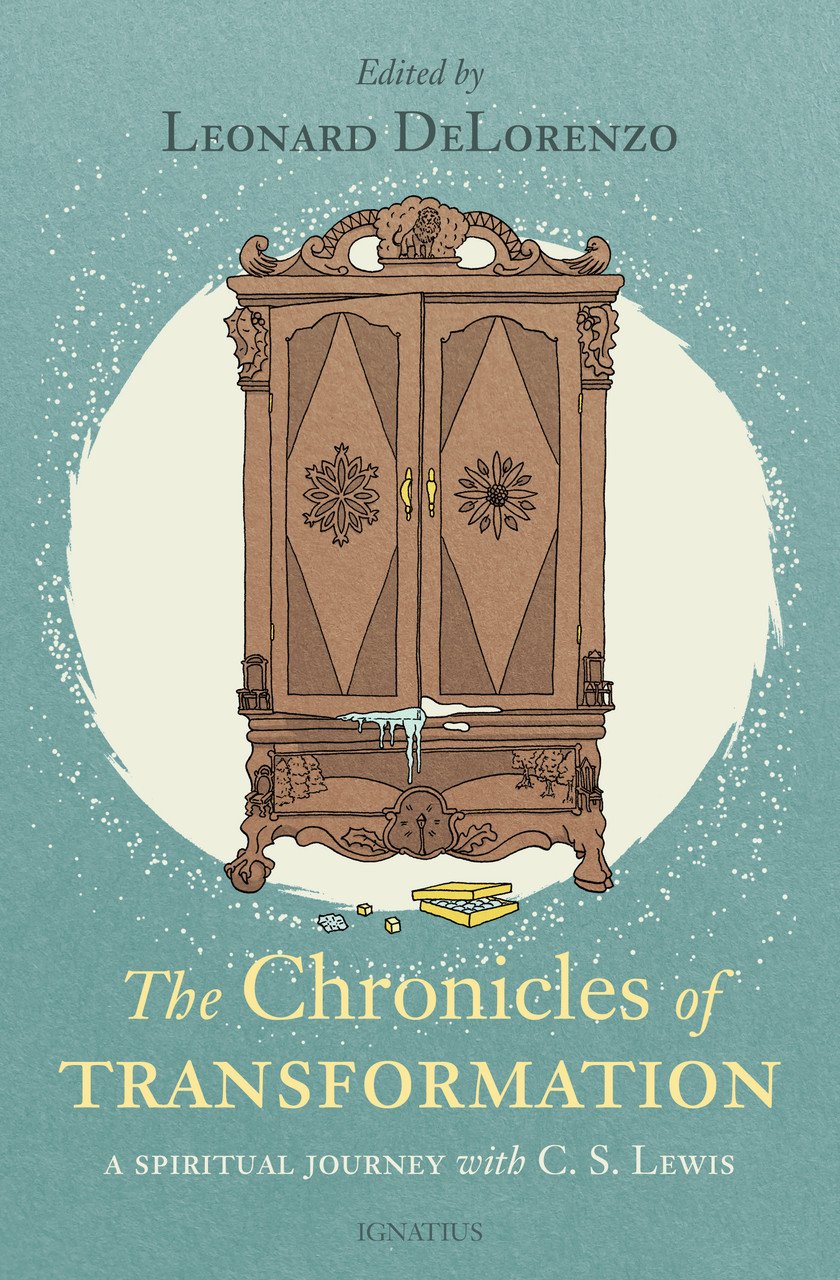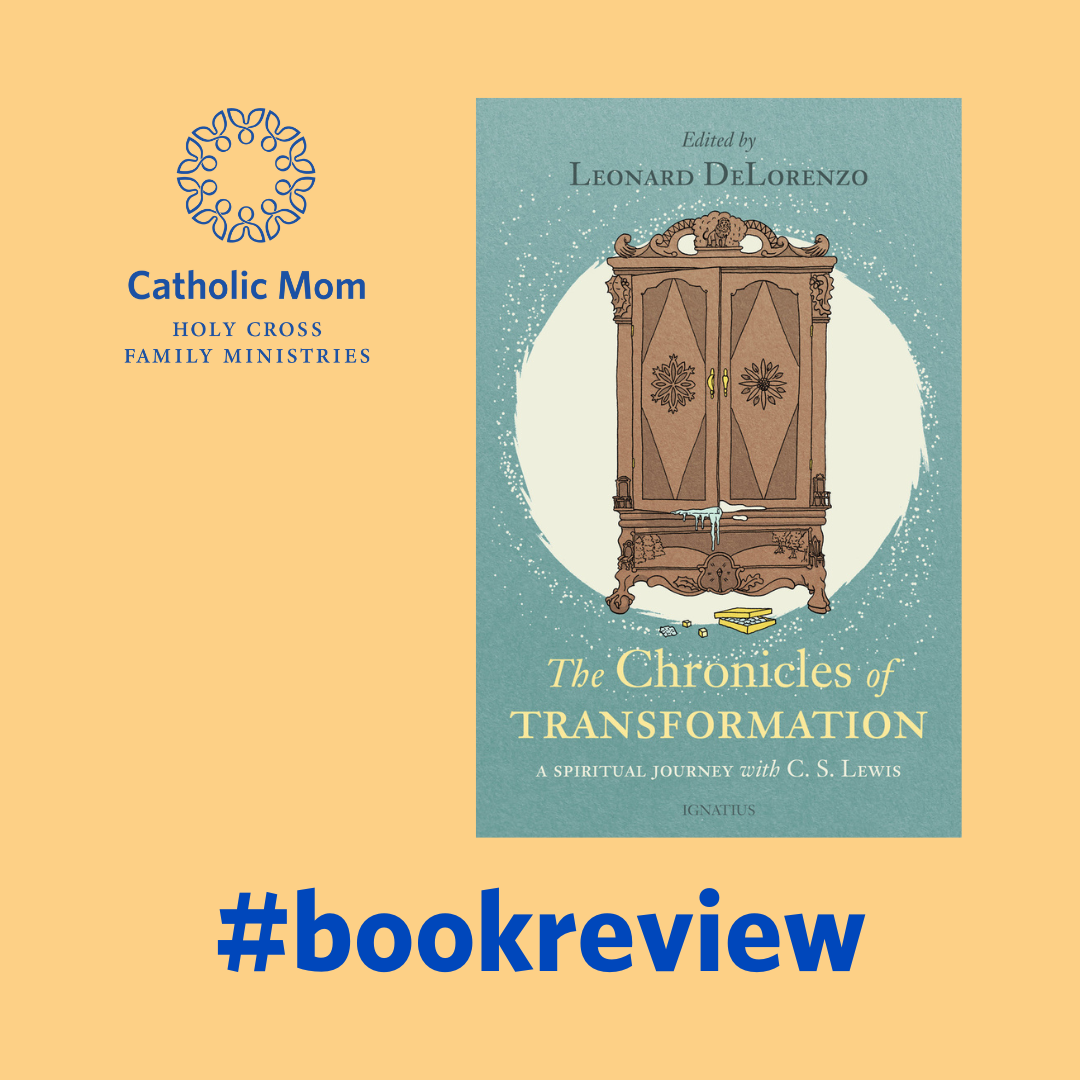
Colleen Mallette reviews Dr. Leonard J. DeLorenzo's new book, The Chronicles of Transformation: A Spiritual Journey with C.S. Lewis.
Dr. Leonard J. DeLorenzo, a professor at the University of Notre Dame, compiled reflections on the seven Chronicles of Narnia books written by C.S. Lewis in the 1950s. Chronicles of Transformation: A Spiritual Journey with C.S. Lewis includes a poem, original artwork and essays proclaimed by him and six other scholars about the books in order to provide a variety of reviews about this enchanting children’s series. The lectures were given during communal readings of the series on campus during the season of Lent. Their main point is to encourage and show how even though these books were written for children, it behooves adults to take on a childlike attitude to enjoy them as well. It also gives spiritual insights into the series for mothers who may be about to read them with her children.

The Narnia fictional stories take place during a tumultuous time in history (World War II) when the four children had been homebound and unable to enjoy real life and therefore were thrilled to escape to the world of Narnia full of adventure and hope. Likewise, we are living in a time when hope is difficult to muster for adults with politics, pandemics, downturned economies, global warming, wars and disputes surrounding us.
C.S. Lewis said, “A children’s story which is enjoyed only by children is a bad children’s story” (On Stories). Adults are called to take on the attitude of a child and enjoy the use of imagination to enter into the wonderful story of the Penvensie children. By “paying closer attention to the concreteness of the story, yielding their minds and their imaginations to what they are hearing and what they are seeing, … and give themselves over to being drawn in” (DeLorenzo, page 47) they can escape the trials of the real world. This book brings the messages of the Chronicles to light and encourages adults to read them in a new way with the delight of a child.
With an unexpected outcome of writing a Christian salvific message, C.S. Lewis provides a “supposal” story of what could happen in a fantasy world named Narnia where “the Son of God, as He became a Man in our world, became a Lion there,” (Fagerberg, page 19) to “give them (the readers) images to show them true Christian beauty” (DeLorenzo, page 7) and the sacrifice of our Savior through the Lion Aslan. Lewis was hoping to write a story that allows the readers to “reimagine the drama and joy of Christianity … by inviting us into a different world that would help us see this one with fresh eyes” (DeLorenzo, page 7). Just as the children learn through their journey to “feel the cost of sacrifice,…passionately care for a world that has become their own, … and wait for and love that magnificent Lion” (DeLorenzo, page 8), he wants adult readers to do the same.
The first book written chronologically and released as a movie, The Lion, the Witch and the Wardrobe, tells how the children come to Narnia and the result of their experience. As the Lion tells two of the children, “The very reason why you were brought to Narnia, that by knowing Me here for a little, you may know Me better (there) at home” (page 43). Besides meeting Aslan eventually (not until chapter seven which builds suspense), the children regain hope through this new world, and their characters and strengths grow as a result of many adventures. It is this hope, sense of imagination and adventure the author hopes to reignite in adult readers.
The scholars point out that throughout the essays, Lewis conveys positive messages of family, loyalty, faith, bravery, overcoming envy, forgiveness, sacrifice and atonement, repentance, hope, joy, agape love and God’s many blessings. These encouraging messages would be good to be aware of and point out for mothers who are reading these books to their children. He uses many Christian images and symbols as well as biblical allusions throughout the books, such as a river, lamb, door, and light (Schakel, page 128). Following are specific lessons pointed out from each of the other Narnia books in this compilation:
Prince Caspian: humility, obedience and chivalry of The King
Voyage of the Dawn Treader: added humor, satire & social commentary, proving C.S. Lewis wrote these books for adults as well
The Silver Chair: second resurrection scene; and the importance of spiritual reading
The Horse & His Boy: prodigal son story of a homecoming to the authentic Father which leads to freedom and joy
The Magician’s Nephew: creation story like Genesis which should lead to a response of awe, gratitude and self-sacrifice
The Last Battle: sinful behavior similar to Eden, analogy to Jesus’ Passion, and God’s judgment at the end of times
Chronicles of Transformation provides the reason behind reading (or re-reading!) this series as adults to ignite your faith and imagination, to escape the secular, depressing world, and to reflect on the resemblances of a fictional Lion to the saving graces we all receive thanks to the sacrifice of Jesus who come to earth and died for our sins. It is a good book that makes you want to pull out those old copies of the novels and relive the adventurous stories.

Copyright 2022 Colleen Mallette
Images: Canva
About the Author

Colleen Mallette
Colleen is the proud mother of three young adults. She loves being a full-time stay-at-home mom and a part-time bookkeeper for her husband. She likes to read, write, scrapbook, and volunteer, and is excited to use her talents to share God’s love and the hope of His promises through CatholicMom.com. Colleen is co-author of “In Godʼs Hands, Miracles in the Lives of Moms” and blogs at Colleen's Contemplations.


.png?width=1806&height=731&name=CatholicMom_hcfm_logo1_pos_871c_2728c%20(002).png)
Comments